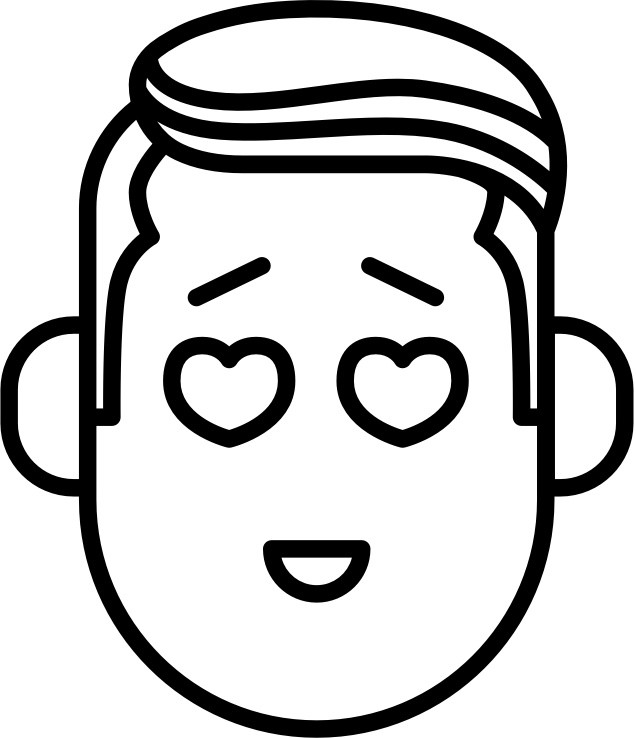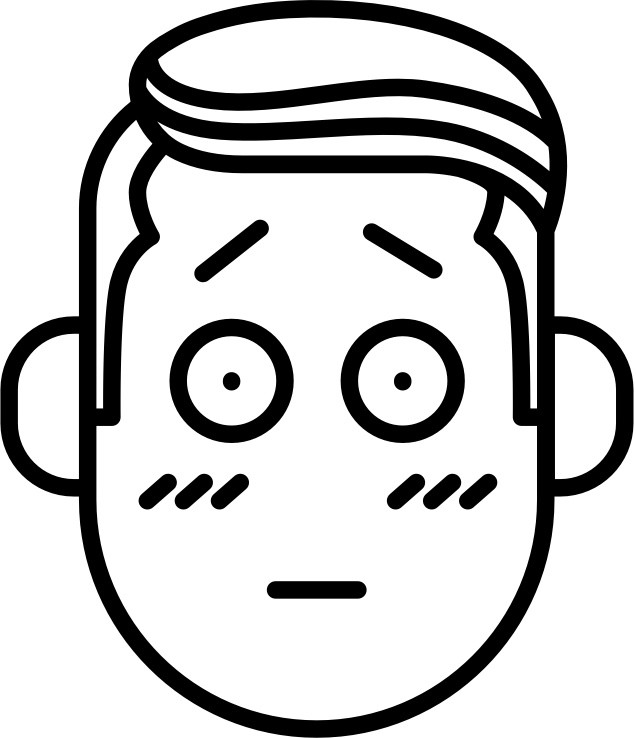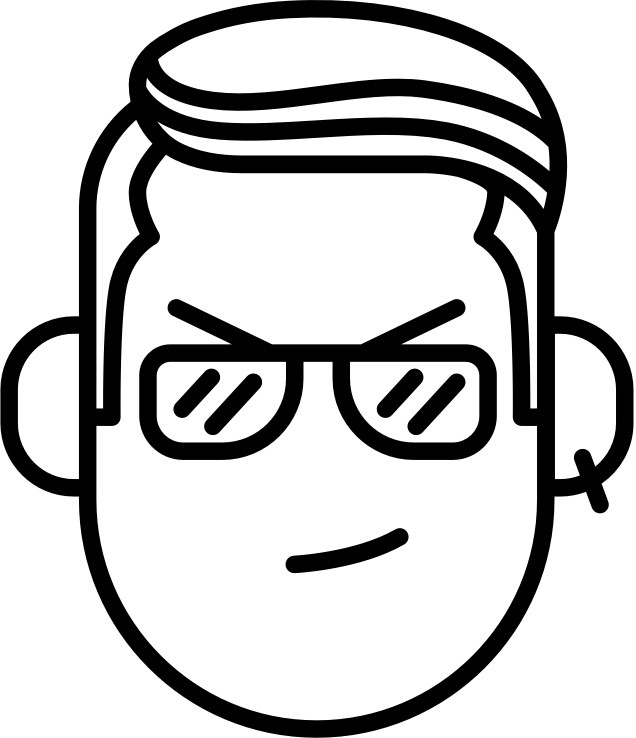This post feels somewhat like a coming of age story. If you’re a junior designer, it might be eye opening. On the contrary, as a design lead it might be the dark satirical humor after a long day that puts a smile on your face.
As designers, we all face daily battles big or small, no matter what position we are currently. Every position has unique struggles that further enhance our leadership and design skills.

Infatuated With Design ????
Stage 1: Fresh Out Of Design School
You love design and everything feels like happy pixels. This is the stage you tell everyone you’re a designer and how awesome everything is. Nothing makes you more excited than spending hours on Dribbble.
Design to you feels like making things look good. If you use gradients and say minimalism a few times everyone says how talented you are.
Junior Designer: “I would love to design your website for my portfolio.”
Business Owner: “Awesome, you’re one of the best designer I’ve seen!”

The OH MY Pixel Face ????
Stage 2: You Mean It’s More Than Just Pixels
The eye opening stage learning of what design truly means? The days of exploring unnecessary colors with poor readability somewhat fade away. Design decisions become more concrete and are backed with solid reasoning.
Junior Designer: “Come look at my mockup!”
Senior Designer: “Nobody knows what this icon means, it’s just lines without any content or visual cues. We design products for everyone to use, not so you can post screenshots online.”
Junior Designer: “Put look how GOOD it looks! Everyone will say how amazing the design is. Trust me on this.”
Senior Designer: “I want you to dive deeper than just pixels. Begin to think about asking the right questions. Become the user mentally and design a solution for them.”

The Face Of Blissful Ignorance ????
Stage 3: I’m So Ingenious Look At This UX Flow
The possibilities in your mind explode when you learn about animations. The idea of making a useable, shippable, and accessible product evaporates into thin air. You feel like Moses but instead of splitting a sea, you split an button into 2 equal halves.
Junior Designer: “Hey team, come look at this interaction I designed. The submit box spins 3 times and jumps through a loop. It’s going to dazzle the user with never ending amazement.”
Senior Designer: “We build products for a global audience. You have to be mindful that not everyone has an iPhone 7 Plus. Think how many DOM manipulations that animation is going to take.”
Junior Designer: “How can I think of other people when I use an iPhone 7 Plus? I design products for myself, not someone I have never seen before. They shouldn’t use our product if they don’t have a new phone anyways.”
Senior Designer: “You can’t be a selfish designer. Improve the product usability and focus on crafting your internal design voice by building product experiences for other people. It might seem difficult to build products with other people in mind but it’s the only way you’re going to improve your design skills.”

How Many Times Must I Fail ????
Stage 4: Discovering Your Design Process
In my design career, this was the most exciting part. I went from building products without much structure to truly perfecting my design process. At this stage you begin to know what questions to ask. Patterns begin to repeat across a multitude of products you design.
What previously felt like searching for a needle in the haystack becomes more like building a puzzle. You have an idea of where things go but you just don’t know how they fit together yet.
Hitting a roadblock in the design process previously felt like laps around the same circle. Now when you face a obstacle you pause, ask a new question and continue the process with structure and composure.
Mid-Level Designer: “I created these wireframes and low-fidelity mockups. I’m not sure where to start exploring new design angles.”
Senior Designer: “The design seems solid, tell me about your process when you were building the product. What questions did you ask and why to you arrive at these conclusions?”
Mid-Level Designer: “I began to ask myself where the most ideal placement for this UI component will be based on when you use the product and what environment the user will most likely be in.
Senior Designer: “Your progress has been excellent, you are starting to truly understand what it means to build high quality products.”

The Stylish Designer ????
Stage 5: I’m Creating New Value For Users
At this stage, your design process is so refined that you can begin creating new value. Pixels are a way to display the underlying product, visuals are complementary and don’t represent the majority of the value.
You begin to truly reinvent the wheel and create innovative product ideas. The experience becomes the focus and the design is how you structure your thoughts.
Senior Designer: “I have this idea about revolutionizing our product. We are a big data health care company but what if we could do 3D data visualization with AR technology and have surgeons wear AR goggles. You actually view your patient’s data in the real world and the surgery process is displayed via your Augmented Reality Glasses.”
Mid-Level Product Manager: “Seems like a cool idea, why don’t you make some 3D design mockups?”
Senior Designer: “This is going to be awesome! It will truly revolutionize the industry. Think of all the countless lives that will be saved due to the technology we could build. Complex medical decisions could be aided with artificial intelligence and augmented reality.
Mid-Level Product Manager: “I like the big ideas… Keep them coming.”
Senior Designer: “If I build the wireframes in a week, how soon can we ship this product?”
Mid-Level Product Manager: “I’ll talk to engineering, once we get approval from management I will update you right away!”

Homelessness Seems Like A Solid Option ????
Stage 6: I Went From Pixels To Putting Out Fires
Design school seems like a distant memory. Years of working in the field starts to wear you down. Finally, after 5–6 years the time comes when you get to lead a large design team. You become more of a fireman than a designer of any sorts.
Pixels seem like stars floating in the sky, just distant memories far away. The 2pm meetings about discussing the direction of the product becomes your new hobby. Opening Sketch feels like hanging out with an old friend for the first time in a while. You know where everything is but you get the feeling of “where do we start.” Inspiration feels like a buzzword that stings your ears (pun intended).
Coffee feels like a cult ritual that you attend every morning. Exhaustion doesn’t describe your mental state of being. Life kinda runs on auto pilot and a zombie designer is a better name for you than some fancy title.
Design Lead: “Why do you keep changing product direction?”
Senior Product Manager: “Our product flows with the market.”
Design Lead: “When will we have solid concepts I can build on.”
Senior Product Manager: “I’ll talk to the executive team.”
Design Lead: “How can I design a product that’s never consistent?”
Senior Product Manager: “Be more zen.”
What Should I Learn From This?
Embrace the lightness of being a junior designer. It’s one of the most exciting points in any design career. The freedom to make mistakes and grow allows you to enter one of the most creative times in your career. You aren’t trapped to dogma which is living with the results of others people’s thinking. Break the rules a bit, you just might end up designing something truly remarkable. Always surround yourself with talented senior designers who will pick you up when you fall.
Don’t be afraid to add that drop shadow…Enjoy your design youth.